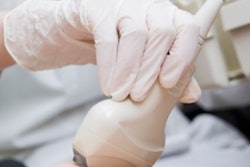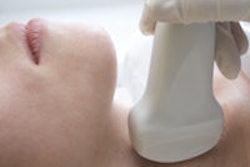
Want to increase the number of emergency department point-of-care (POC) ultrasound studies being archived on PACS at your institution? It may not take that much effort to get emergency room physicians on board, according to a study published in the Journal of Digital Imaging.
Researchers from Denver Health Medical Center found that a simple initiative consisting of reminders and modest incentives yielded significant and sustained improvement in the percentage of POC ultrasound studies being stored on PACS, climbing from 10% to nearly 75% of studies. This change confers a number of important clinical advantages, according to the team led by Dr. Ross Kessler, now at the University of Michigan.
"Benefits of PACS archival of images include improved quality assurance, preservation of image quality for billing requirements, decreased duplicate studies and imaging costs, and accessibility of images to consultants resulting in improved patient care," the authors wrote.
Less PACS utilization
Unlike radiologists who have successfully adopted digital archiving of ultrasound studies, emergency physicians don't often utilize PACS for their point-of-care ultrasound studies. Instead, they typically print out hard copies on thermal printers or store the digital images to a local hard drive, according to the researchers (JDI, July 13, 2016).
"However, similar to consultative ultrasound (i.e., those performed by radiology), POC ultrasound is subject to the same quality assurance and billing requirements for image archival and report generation," the authors wrote. "Printed POC ultrasound images are commonly of poor quality or misplaced, and digital images on a local hard drive or non-PACS server may not be preserved for a prolonged period of time, thereby not meeting these requirements."
As a result, the team implemented an intervention program aimed at improving the use of PACS for POC ultrasound studies at the institution, a 477-bed academic level I trauma center that performs approximately 2,400 POC ultrasound studies annually in the emergency department (ED). Residents perform most of the studies and are supervised directly by an attending physician or fellow, according to the researchers.
Over the course of the study from July 2014 to January 2015, the team tracked a convenience sample of ED residents, fellows, and attending physicians who were all blinded to the existence and purpose of the research project. To assess PACS utilization, the researchers accessed their department's ultrasound quality assurance database, which indicated which ultrasound studies were archived to PACS or were stored as printed thermal images. After initially collecting baseline data for one month, the group rolled out the intervention program.
During the 12-week program, ultrasound fellows sent biweekly emails, senior residents provided daily verbal reminders during sign-out of shifts, and signs were posted on ultrasound machines to encourage the use of PACS for archiving. In addition, the physician who stored the most studies on PACS over a two-week period was awarded a $20 gift card. The incentives and reminders were discontinued after the intervention program concluded, but the signs were left on the ultrasound machines.
Significant improvement
The researchers found that the utilization of PACS improved significantly during the intervention period, as well as in the three months afterward:
- Baseline: 10%
- Intervention: 69.4%
- One month after intervention: 74.3%
- Two months after intervention: 61%
- Three months after intervention: 74.8%
The difference between the baseline and intervention periods was statistically significant (p < 0.001), while the difference between the intervention period and the period three months after intervention was not.
"Although we anticipated attrition after removal of the interventions, the percentage of studies archived to PACS was sustained over time," the authors wrote.
Prior studies in the literature have reported that interventions such as educational initiatives aimed at improving patient safety can yield practice changes and better patient care, the authors noted.
"A similar change in departmental culture was observed with our interventional program for POC ultrasound, which we believe is generalizable to other EDs and can help sustain a robust digital ultrasound program with PACS connectivity," the authors wrote.




















